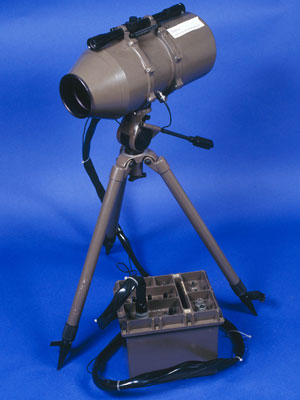Heat-Imaging Technology - Infrared

Forty years of Defence research culminated in an invention emerging as the worldwide industrial standard in affordable heat-imaging devices, applicable for a plethora of practical military and commercial uses.
Research on uncooled infrared sensors started at the Weapons Research Establishment (WRE) in the 1950s with work on devices called resistance bolometers. In 1959, a visionary report by N.K. Jones and A.W. Pybus foresaw the development of thin film resistance bolometer arrays able to provide real time heat images.
Research concentrated on micro-machining methods during the 1970s, a decade before the acronym MEMS (microelectromechanical) was coined to describe the process. Inventor of key bolometer technologies Kevin Liddiard led the research program during this period.
By the time this field of research ceased in 1996, several operational variants of a lightweight thermal-imaging device had been produced. These included THIRDA (Thermal Infrared Detection Aid) a technology demonstrator sensor developed during the 1980s, IRIS (Infrared Intrusion Sensor) and LCUTI (Low Cost Uncooled Thermal Imager) and a low-light-level image intensifier.
DSTO-patented uncooled infrared detectors differ from those of the ubiquitous motion detector in that they allow a complete heat-image of a scene to be viewed in real time. They cost considerably less to produce than competing cryogenically cooled technologies and provide comparable performance in smaller more rugged imagers.
High performance, compact and affordable infrared sensor devices have many applications other than military ones. These include industrial, search and rescue, medical, fire prevention, environmental, security and horticultural applications.
Commercial contracting and licensing arrangements by DSTO enabled microbolometer development to continue in Australia, fully funded by industry investment. Kevin Liddiard now heads Electro-Optic Sensor Design, the Australian licensee of this technology.

